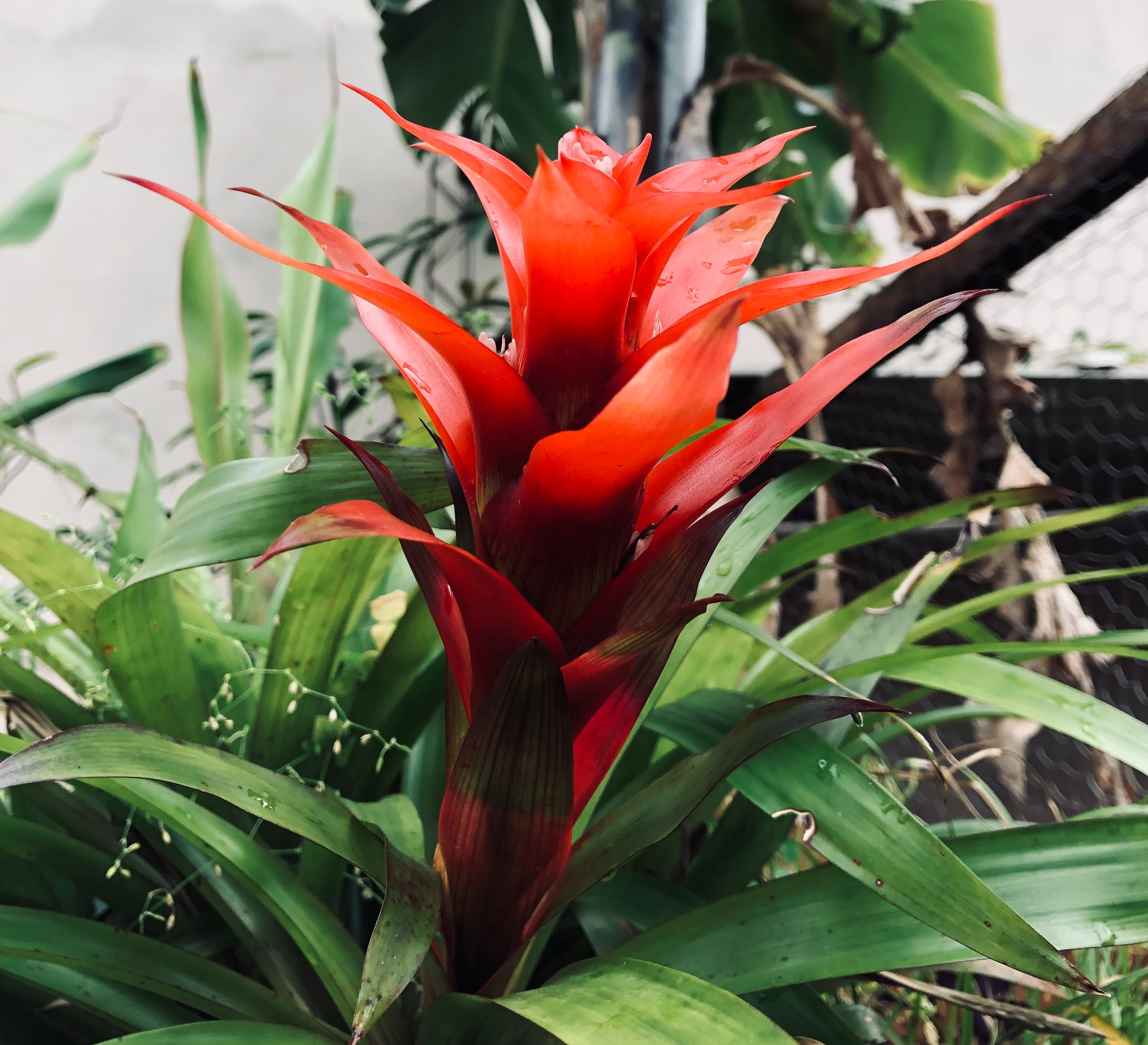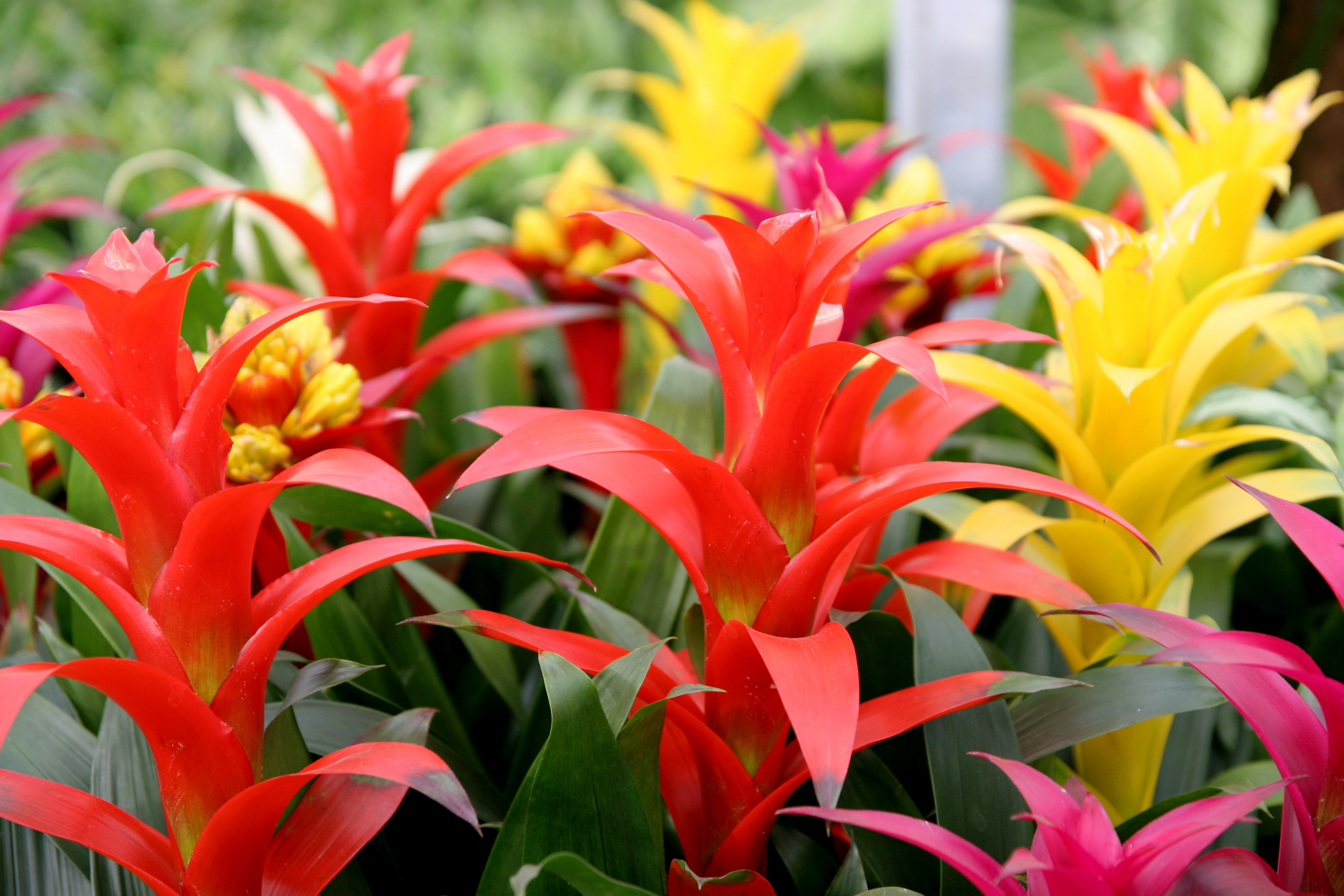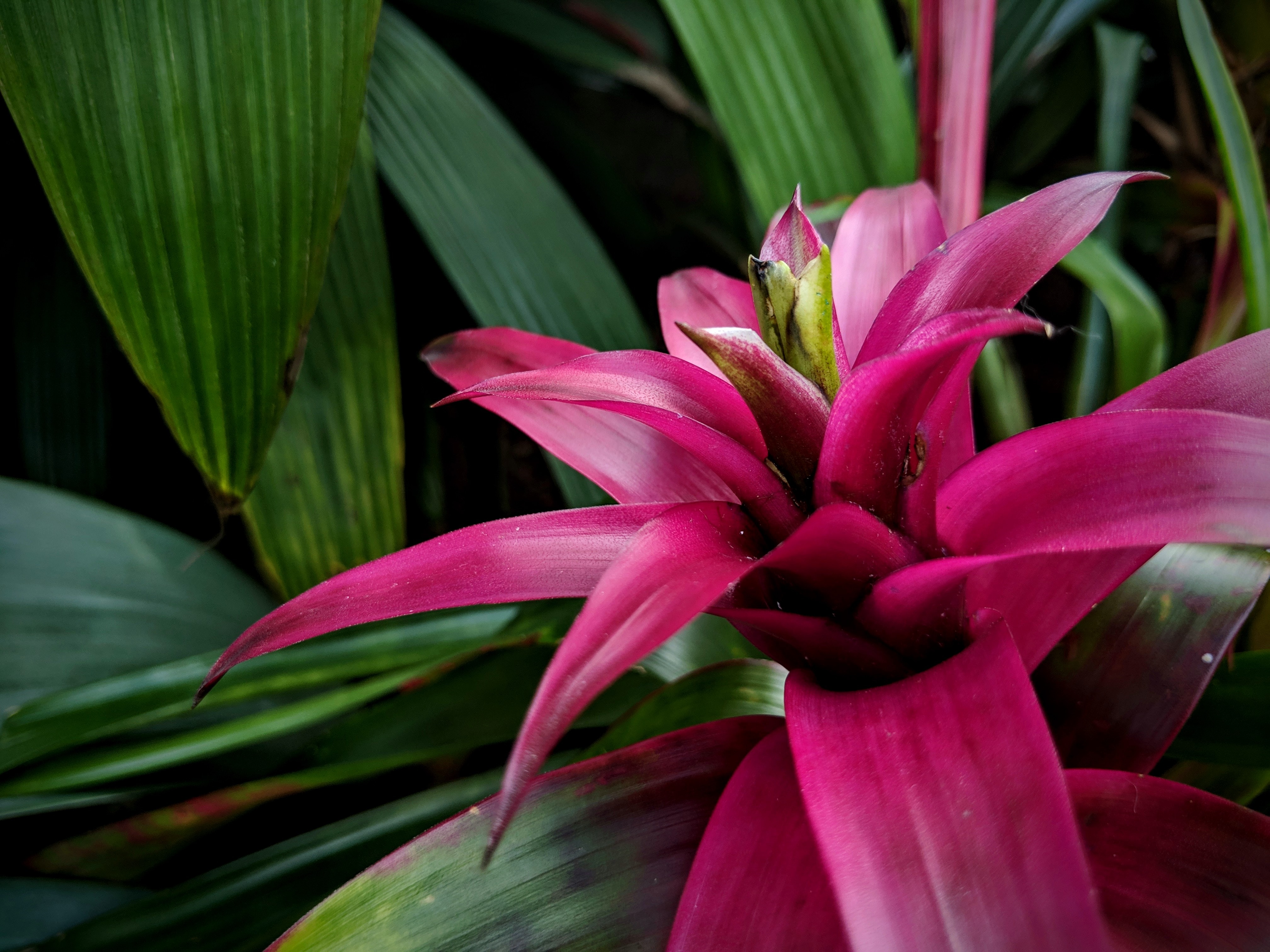Origin
Guzmania plants, part of the Bromeliaceae family, are vibrant tropical perennials celebrated for their vivid star-shaped flower bracts. With a staggering array of over 200 species in the wild, all originating from South America, they showcase remarkable diversity.
Among the most common and favored varieties as indoor plants are Guzmania sanguinea , Guzmania lingulata , alongside an assortment of hybrids and cultivars. These plants are robust and low-maintenance, boasting enduring and stunning hues that persist even with minimal care. This attribute renders them an excellent choice for hassle-free indoor cultivation, sure to captivate attention as a striking decorative piece.

Care
Taking care of Guzmania plants requires attention to their water needs. These plants dislike excessive watering. Instead, it's best to pour water, preferably distilled or rainwater, into the central cup of the plant and replace it periodically. This practice helps prevent the risk of rot, which they're prone to if overwatered or if the water is standing too long in the middle. Due to their shallow root system, it's advisable to use smaller pots with well-draining soil. This setup ensures proper drainage and aeration for the root.
Regarding lighting conditions, Guzmania differs from other colorful plants. They can tolerate slightly lower light environments and can suffer damage if exposed to too much direct sunlight. Protecting them from harsh sunlight is therefore crucial for their well-being.
Considering their tropical origins, these plants appreciate slightly higher humidity. Regular misting can benefit them, contributing to a healthy growth environment. However, it's important to keep them away from sources of dry heat or air conditioning vents, as these conditions can cause the plant to dry out.
Flowering
The actual flowers of this plant are quite small compared to the entire flower structure. What we often see as the flower is in this case actually called bracts, which are modified leaves that function similar to petals. These bracts serve the purpose of attracting pollinators in the plant's natural environment. Unlike typical flowering houseplants where we admire the real flowers and petals, in this plant, the bracts remain in their colorful state for a much longer time.
Depending on its environment, this plant can maintain its vibrant appearance anywhere from 2 weeks to 2 months. Eventually, the colors will fade, and in many instances, the bracts will slowly turn green or start to dry up.
As the inflorescence, or the flowering part, begins to wither, it's important to note that this plant is monocarpic. This means that after flowering, the main leaf rosette unfortunately starts to decline gradually. This process may take several months or even more than a year. During this period, new leaf rosettes will start forming, continuing the growth while the original one fades and eventually perishes.

Other
Guzmania plants are epiphytic, meaning that they can grow directly on top of other plants or trees without having a negative or parasitic effect on the host plant. This is because their roots are able to take nutrients from the air, so they don't leach anything from other plants.
Their bright flowers can come in a range of colors depending on the specific variety. Example shades include orange, yellow, red, pink or even a deep purple color.
